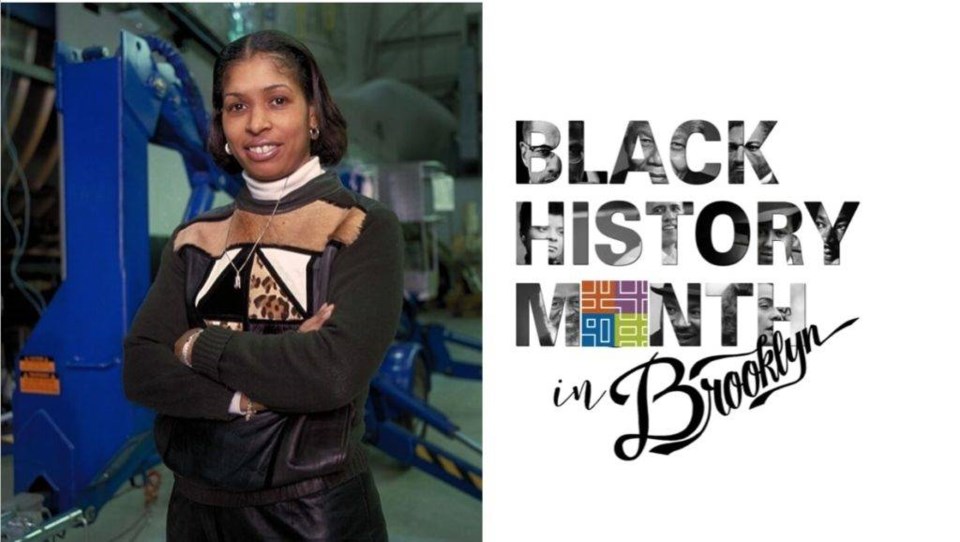Dr. Aprille Ericsson is the first African-American female to receive a Ph.D. in Mechanical Engineering from Howard University and the first African-American female to receive a Ph.D. in Engineering at the National Aeronautics and Space Administration (NASA) Goddard Space Flight Center (GSFC).
Ericsson grew up in Bedford Stuyvesant's Roosevelt Houses on Dekalb Avenue. A very bright and gifted child, she attended P.S. 199 and Marine Park Junior High School. She said she first realized she had an aptitude for mathematics and science during junior high where she was the only black student enrolled in the Special Progress Program.
She passed the exams for all of New York's Technical High Schools: the Bronx School of Science, Stuyvesant and Brooklyn Technical. But instead of attending those schools, she moved to live with her grandparents in Cambridge, MA, where she attended Cambridge School of Weston. In high school, she played basketball and softball and excelled in sports, math and science.
Ericsson received her bachelor's degree in Aeronautical/Astronautical Engineering from Massachusetts Institute of Technology (MIT). During her undergraduate years at MIT, she was involved with several projects geared toward manned space flight, including the Applied Physics Laboratory where she helped develop a fiber optic laser gyroscope. She also was active in the Space Systems Laboratory where she helped create a database for EVA neutral buoyancy activities performed at NASA Johnson Space Center, and the Manned Mars Mission crew systems where she was a specialist for interplanetary vehicles.
These projects generated a strong desire to participate in manned space missions.
Ericsson went on to earn a Masters of Engineering from Howard University. She continued at Howard University where she became the first woman to receive a Ph.D. in Mechanical Engineering, Aerospace option. Her Ph.D. research objective at HU was to develop practical design procedures that can be used in conjunction with optimal digital controllers for future orbiting large space structure systems like the Space Station.
The majority of Ericsson's engineering career has been spent working at the NASA Goddard Space Flight Center (GSFC) helping NASA evolve and fine-tune a global understanding of the sun-earth connection, earth and space science. Her NASA career started as an aerospace engineer in the Robotics group, but soon after, she transferred into the Guidance Navigation & Control discipline.
Ericsson's expertise was used to manage the spacecraft's orientation and position during most phases of a mission. Using computers, she calculated and simulate structural vibrations, thrusting scenarios and environmental disturbances.
In 2006, she collaborated on the "Mars Scout" proposal called "SCIM," a proposed sample and return mission to Mars, serving as a manager for the Dust collector Experiment (DuCE) which proposed sterilization and stowage of trapped dust particles from the Martian lower atmosphere for delivery to Earth.
From 2007 to 2008, she served as an Instrument Engineer, supporting the development of two flight instruments (ST8 Miniature Thermal Loop Heat Pipe, a technology development and, Lunar Orbiter Laser Altimeter (LOLA), an instrument on the Lunar Reconnaissance Orbiter) during their integration and testing periods. The LOLA instrument was successfully launched on June 18, 2009.
Recently, Ericsson was responsible for a $30 million budget that would deliver a three-telescope instrument comprised a coilable boom, a student experiment and three detectors that measure the polarization of X-ray beams.
Her current responsibilities include serving as the Acting IM for the ICESat-2/ATLAS (Ice, Cloud, & Land Elevation Satellite), a $240 million instrument that will provide measurements to quantify changes in ice-sheet mass and its drivers, and the impact of these changes on future global sea level; monitor atmospheric exchanges of energy, mass, and moisture; and measure vegetation canopy height. The ICESat-2 successfully launched in September 2018.
In between all of this Ericsson has served as an adjunct professor at Howard University and Bowie State University where she teaches courses in mechanical engineering and mathematics. She also teaches Aerospace theory to students at HU Public Charter Middle School of Math & Science (MS)2.
Aprille Ericsson has been acknowledged by the National Technical Association, for being amongst the Top 50 minority women in Science and Engineering. She received the NASA Goddard Honor Award for Excellence in Outreach (individual) and Center of Excellence Award for the TRMM Project (Group). Dr. Aprille Ericsson was elected to the Howard University Board of Trustees in September 2004.
In February 2010, she received a Science Trailblazers award from the Black Engineers of the Year Award Conference. And in May 2011, she was awarded the Presidents Medal from York College. Also, she is a member of the NASA GSFC Speakers Bureau and the Women of NASA Group.
Ericsson's list of high-level roles, responsibilities, achievements and accolades goes on and on. And on. She is so many things to so many people in such an important way: an Aerospace-Rocketry-Mechanical-Engineering-Professor-Computer Instructor-Career Advisor-Mentor and Friend for hundreds of students and colleagues.
Dr. Aprille Ericsson, we acknowledge your vast contributions to robotics, aeronautical engineering and space exploration. We honor your commitment to being a leader and example to young African-American students in advancing science and mathematics, making it applicable in their own lives and accessible as a career. You make Bed-Stuy very proud!
*Sources: nasa.gov, sciencemaster.com, infoplease.com and patch.com.




